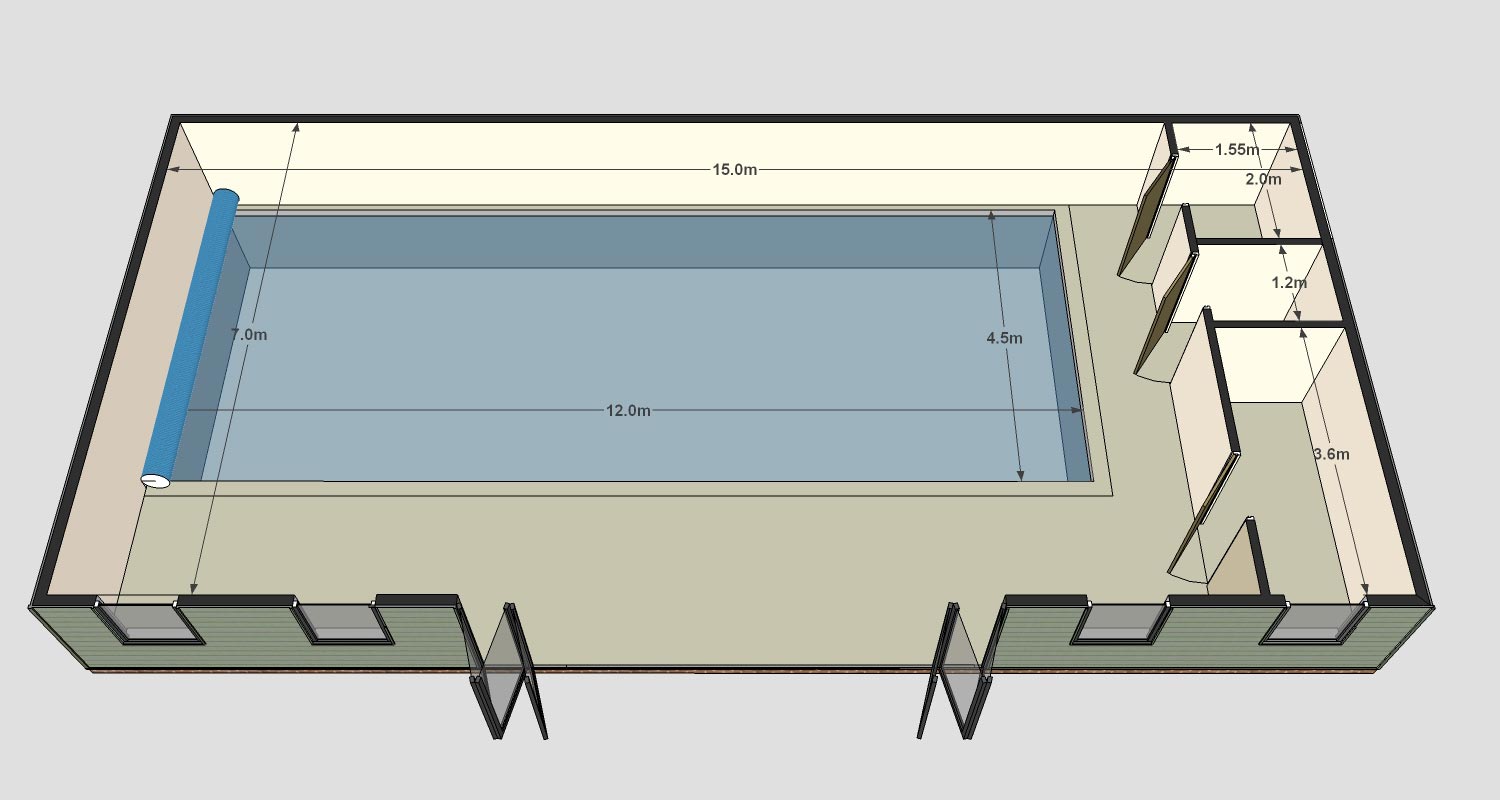How To Prepare For Damaging Winds In Fast-Moving Storms

Table of Contents
Assessing Your Risk and Creating a Storm Plan
Before a storm hits, understanding your risk and having a solid plan in place is paramount. This involves knowing your local threats and developing a comprehensive family emergency plan that addresses potential wind damage.
Understanding Your Local Threat
Identifying the types of fast-moving storms that affect your area (hurricanes, tornadoes, derechos, severe thunderstorms) is the first step in effective storm preparation. Knowing the specific threats helps tailor your preparations for the unique challenges each storm type presents.
- Research historical storm data for your region: Websites of the National Oceanic and Atmospheric Administration (NOAA) and your local meteorological agency provide valuable historical data. This helps you understand the frequency and intensity of damaging winds in your area.
- Subscribe to weather alerts: Sign up for alerts from the National Weather Service (NWS) or your local meteorological agency. These alerts will provide timely warnings of impending severe weather, including watches and warnings for damaging winds.
- Understand the warning systems: Familiarize yourself with the difference between a watch (conditions are favorable for the development of severe weather) and a warning (severe weather is imminent or occurring). Knowing these distinctions helps you respond appropriately.
Developing a Family Emergency Plan
A well-rehearsed family emergency plan is crucial for minimizing confusion and maximizing safety during a fast-moving storm with damaging winds. This plan should cover communication, shelter, and evacuation procedures.
- Create a family communication tree: Designate an out-of-area contact person who family members can contact to check in and share information. This is important if local communication lines are down.
- Pack an emergency kit: Gather essential supplies including water, non-perishable food, a first-aid kit, medications, flashlights, batteries, and a portable radio.
- Identify a safe room: Choose a sturdy interior room, ideally on the lowest level of your home, away from windows. This will serve as your shelter during the height of the storm.
- Determine evacuation routes and alternate shelter locations: If evacuation is necessary, plan your route in advance and identify potential alternative shelters, such as a friend's or family member's home, or a designated community shelter. Practice your evacuation route regularly.
Securing Your Property
Before the storm arrives, securing your property is vital in preventing wind damage and minimizing the risk of airborne projectiles.
- Bring in all outdoor furniture, trash cans, and decorations: These items can become dangerous projectiles in high winds.
- Trim trees and shrubs: Overgrown trees and shrubs can increase wind resistance and potentially cause damage to your home. Properly trimming them reduces this risk.
- Reinforce weak points: Inspect your home's structure for weak points such as loose siding, damaged roofing, or poorly secured windows and doors. Reinforce these areas to withstand high winds.
Protecting Your Home from Damaging Winds
Protecting your home from damaging winds involves strengthening its exterior, preparing its interior, and securing your vehicle.
Strengthening Your Home's Exterior
Focus on strengthening areas most vulnerable to wind damage. Investing in preventative measures can significantly reduce the risk of structural damage.
- Install storm shutters or impact-resistant glass: These provide superior protection against flying debris and high winds compared to standard windows.
- Reinforce garage doors: Garage doors are often weak points in a home's structure. Reinforcing them with bracing or straps can significantly improve their wind resistance.
- Inspect and repair roofing: Regular roof inspections are vital, especially before storm season. Repair any loose or damaged shingles or flashing to prevent wind damage.
Preparing Your Interior
Securing heavy items inside your home prevents injury and further damage during a storm.
- Move furniture away from windows: Heavy furniture near windows can be dangerous if the windows break.
- Store chemicals and flammable materials safely: These materials pose additional risks during a storm. Secure them away from potential ignition sources.
- Protect valuable documents and electronics: Store important documents in waterproof containers and consider backing up electronics to a cloud service.
Protecting Your Vehicle
Protecting your vehicle minimizes damage and ensures mobility after the storm.
- Park your car in a garage: This offers the best protection from high winds and flying debris.
- Fill your gas tank: Gas stations may be unavailable after a storm. A full tank ensures you have fuel for evacuation or emergency use.
- Consider higher ground: If flooding is a concern, park your vehicle on higher ground to avoid potential water damage.
Staying Safe During a Fast-Moving Storm with Damaging Winds
Staying safe during the storm requires constant monitoring, seeking appropriate shelter, and taking the necessary precautions.
Monitoring Weather Reports
Stay informed throughout the storm using multiple reliable weather sources.
- Utilize multiple sources: Use radio, television, and internet-based weather services to get up-to-date information.
- Pay close attention to warnings: Heed all official warnings and advisories from the National Weather Service.
Taking Shelter
Move to your designated safe room immediately upon receiving a warning.
- Stay away from windows: Windows are the most vulnerable points in your home.
- Protect your head and neck: Use a helmet or cover your head and neck with pillows or blankets.
- Avoid using electronics: Avoid using electronics during the storm to reduce the risk of electrical shock.
Post-Storm Actions
After the storm, carefully assess damage, avoid hazards, and contact emergency services if needed.
- Take photos of damage: Document any damage to your property for insurance purposes.
- Avoid downed power lines: Downed power lines are extremely dangerous.
- Be aware of potential hazards: Be cautious of flooding, debris, and other potential hazards.
Conclusion
Preparing for damaging winds in fast-moving storms is crucial for protecting your family and property. By following these steps – assessing your risk, protecting your home, and staying safe during the storm – you can significantly reduce the impact of these powerful weather events. Don't wait until the next storm hits; start preparing for damaging winds today to ensure your safety and peace of mind. Remember to regularly review and update your plan for dealing with damaging winds from fast-moving storms. Your safety and the safety of your loved ones depend on it.

Featured Posts
-
 I Kroyz Azoyl Toy Giakoymaki Sto Dromo Gia Ton Teliko Toy Champions League
May 21, 2025
I Kroyz Azoyl Toy Giakoymaki Sto Dromo Gia Ton Teliko Toy Champions League
May 21, 2025 -
 Understanding The Reasons Behind D Wave Quantum Inc Qbts Stocks Monday Increase
May 21, 2025
Understanding The Reasons Behind D Wave Quantum Inc Qbts Stocks Monday Increase
May 21, 2025 -
 Raw Video Pub Landlords Scathing Attack On Departing Staff Member
May 21, 2025
Raw Video Pub Landlords Scathing Attack On Departing Staff Member
May 21, 2025 -
 How Trade Wars Affected Porsches Strategy The Ferrari Mercedes Dilemma
May 21, 2025
How Trade Wars Affected Porsches Strategy The Ferrari Mercedes Dilemma
May 21, 2025 -
 Nice Unveils Plans For New Olympic Sized Swimming Pool Complex
May 21, 2025
Nice Unveils Plans For New Olympic Sized Swimming Pool Complex
May 21, 2025
Latest Posts
-
 Find The Perfect Outdoor Dining Spot In Manhattan
May 22, 2025
Find The Perfect Outdoor Dining Spot In Manhattan
May 22, 2025 -
 Zvanicno Vanja Mijatovic Vise Nije Vanja Mijatovic
May 22, 2025
Zvanicno Vanja Mijatovic Vise Nije Vanja Mijatovic
May 22, 2025 -
 Best Outdoor Restaurants Manhattan Where To Dine Al Fresco
May 22, 2025
Best Outdoor Restaurants Manhattan Where To Dine Al Fresco
May 22, 2025 -
 Vanja Mijatovic Promenila Ime Detalji O Promeni Imena
May 22, 2025
Vanja Mijatovic Promenila Ime Detalji O Promeni Imena
May 22, 2025 -
 Gospodin Savrsenog Neocekivani Par Vanja I Sime
May 22, 2025
Gospodin Savrsenog Neocekivani Par Vanja I Sime
May 22, 2025
